War is over – it’s time to head back to Colombia
The peace deal with war lords and drug gangs is just one of the many reasons why Colombia is set to prosper. Smart investors should buy in now, says James McKeigue.


Last week, pictures of Colombian government negotiators posing awkwardly with ex-guerrillas in matching shirts were beamed around the world. The photo shoot was clumsy, but it got the message across: Colombia, long synonymous with armed insurgents and violent narcotics gangs, wants the world to know it is on the road to peace. It was also a distraction from depressing headlines produced by a slowing economy. Over the last two years the Colombian peso has lost 40% of its value against the dollar amid falling oil prices. For Colombia's new middle class, born of an economic boom that started around 2000, imported gadgets and foreign holidays are becoming prohibitively expensive. The fall in the value of oil exports has widened the current-account deficit, while a smaller tax take has left the government with a budget shortfall.
Yet the downbeat headlines hide an exciting investment opportunity. The weak peso is boosting growth in other areas, such as manufacturing (growing at 6% a year), tourism and financial services. And for all of its woes, Colombia has avoided the economic travails of neighbours Brazil and Venezuela, both of which are in severe recessions. The boost from this currency depreciation will be sustained by major structural changes, such as the peace process and extensive investment in infrastructure, which should make Colombian industry even more competitive. Best of all, UK investors who buy in now get a great discount. Even after sterling's post-Brexit fall, the Colombian peso is still 30% lower against the pound than it was at the start of 2013. That makes now a great time to buy Colombia on the cheap.
Back from the brink
For most of the 20th century, Colombia was inward-looking and closed off. In 1991 a new constitution opened it up to global investors. Yet Colombia was at risk of becoming a failed state as its institutions struggled to cope with two interlinked battles. One was against guerrilla forces, most notably the Revolutionary Armed Forces of Colombia (Farc), which first took up arms in 1964. The other was against cocaine-smuggling drug lords, whose wealth and power undermined the state's ability to provide security for its citizens. Declaring victory in these conflicts would be premature, but Colombia has made great progress. Drug smuggling continues, but the narcotics gangs are weaker, smaller, and have far less impact on the wider population than they once did. Meanwhile, guerrilla groups now largely operate only in the fringes of the country.
MoneyWeek
Subscribe to MoneyWeek today and get your first six magazine issues absolutely FREE

Sign up to Money Morning
Don't miss the latest investment and personal finances news, market analysis, plus money-saving tips with our free twice-daily newsletter
Don't miss the latest investment and personal finances news, market analysis, plus money-saving tips with our free twice-daily newsletter
The state's growing power coincided with the commodity-price boom. Higher prices and improved security allowed Colombia to take advantage of its wealth of natural resources. By 2010 oil production had doubled to one million barrels of oil equivalent per day (boe/d) from around 500,000 boe/d in 2004. International capital began to pour in. Foreign direct investment (FDI) grew from just $1.7bn in 2003 to $16bn in 2013. Throw in a demographic boom Colombia's population has grown by 25% since 2000 and it's little surprise that the economy has done well, tripling in size since 2000 to become one of Latin America's standout performers.
Of course, when a nation makes money from commodities, it is vulnerable to falling prices, and the oil crash in particular. Yet Colombia has ridden out the storm with surprising resilience. That's partly due to extremely prudent macroeconomic management. Debt was cut during the good times, giving the government the slack to borrow during the bad times. At 55% of GDP, debt is a lot lower than the 70% seen in neighbouring Brazil. The government was also careful to cut external debt, preventing the type of balance of payments crisis that used to be the norm in Latin American slowdowns. But the main point for investors to grasp is that Colombia also has a lot more going for it than just oil and coal and these other sectors are now set to benefit from its economic transition.
Made in Colombia
While oil and coal accounted for almost 80% of Colombian exports in 2015, the domestic economy is surprisingly diverse. Manufacturing, construction and services all contributed more to GDP last year than any commodity. Colombian manufacturers haven't had it easy over the past decade huge inflows into the commodities sector boosted the Colombian peso, making locally made products less competitive both at home and abroad. However, the recent slide against the dollar (Colombia's main trading partner is the US) has revived the sector. In the first quarter of 2016, non-oil manufacturing grew faster than the wider Colombian economy for the first time since 2007.
Jos Daro Uribe Escobar, general manager of the Colombian central bank, believes the weaker peso will continue to have a profound impact. Just as "the period of high commodity prices shaped the Colombian economy, over the next few years we will see a change. There will be a shift to agriculture, manufacturing and services such as tourism." This will take time, of course. First, producers have to believe the new currency level is stable, and then build new plant to take advantage so this is an ongoing story. So far, "the tourism sector has been the quickest to respond to the price signals... hotel occupancy rates in the country are at record highs I think it will take five to ten years to see the full impact in other sectors."
But it's not just about the currency. Colombia's improving infrastructure (more on that below) should boost productivity and competitiveness by cutting transport costs. An ongoing demographic boom the population is expected to hit 60 million in 2030, up from 49 million now will create a larger market for domestic producers, while keeping a lid on labour costs. Meanwhile, lasting peace will improve the business environment and reduce security costs. We look at one particularly attractive listed manufacturer below.
Rebuilding the infrastructure
Colombia's land transport infrastructure is terrible, consisting mainly of crumbling single- lane motorways. There is a good reason for this. The country is roughly the size of France, Spain and Portugal combined, and is divided by three long branches of the Andes. Swathes of dense jungle and extreme weather events, such as floods that wash away roads, don't help, while half a century of civil conflict have held development back. But in 2013 the government launched its ambitious 4G infrastructure programme, inviting investors from the local and international private sector to build and finance roads. The programme is enormous, with $50bn of projects lined up for the next decade.
To begin with, the programme was beset by problems. Challenges from local communities, unwieldy bureaucratic procedures, and uncertainty over financing models meant the first year or so was plagued by delays. But this year has seen significant progress. Building has begun on nine projects, worth around $12.5bn, while many more contracts have been awarded. I interviewed the chief executives of several of Colombia's leading infrastructure firms last month and the consensus is that the teething problems have been sorted out and the programme should pick up speed.
Alejandro Sanchez, executive vice-president of Corficolombiana, the largest infrastructure investor in Colombia, notes that, "until now, Colombia's large financial groups were able to fund and develop most projects, so the country has not got a lot of exposure to international financial actors. But I think things will move faster from now on because both local and international players have learned from the process." As the project advances, journey times between cities will drop, helping to reshape the country. It is also great news for firms involved in the programme we highlight a way to play it below.
A gold rush
As you might expect, over the last few years most of Colombia's extractive industries have been hit by the falling prices of the materials they produce. One bright spot has been gold, whose price has risen by almost 30% since the end of 2015. But even before prices began to rise, the Colombian gold-mining industry was changing, helped by the improving security situation. Gold miners were particularly hard hit by the civil conflict and narcotics gangs, because the high value-to-weight ratio of gold makes it a handy funding source for illegal groups indeed, around 80% of Colombian gold comes from illegal mines.
But things are changing. The government is encouraging informal miners to register their operations and bring them up to required standards. Colombia's institutions are getting better at handling these issues the emerald mining industry has been successfully formalised, for example. Meanwhile, military victories against Farc have opened up gold-rich mining locations to legitimate investment. In 2000, Farc controlled 40% of Colombian territory, restricting gold miners' exploration efforts. As these huge swathes of Colombia are opened up to modern, efficient mining, gold output will soar.
Colombia's National Mining Agency estimates that gold production will grow by 30% over the next five years, with the country becoming a top-ten gold producer by 2021, from 20th place today. That optimism is based on four major gold-mining projects being developed, with combined proven resources of 6.5 million ounces and grades as high as 10.8 grams per tonne. Clearly, starting a mine in a former conflict area comes with its own set of challenges, but for the first that get in first, the potential rewards are huge. (See below.)
The three stocks to buy now
Miner Continental Gold (Toronto: CNL) is developing a high-grade gold deposit in Buritic, about 60 miles north of Colombia's second city, Medelln. The $400m market-cap firm already runs a small mine nearby, but the flagship project has proven and probable reserves of 3.7 million ounces of gold and 10.7 million ounces of silver. Despite their relatively large size, these are high-quality projects CEO Ari Sussman believes one reason Continental Gold was able to find such a rare resource is because "Colombia's security problems of the 1980s and 1990s meant it missed out on the wave of technological mining improvements that swept the rest of the world." The miner expects to receive a final environmental permit at the end of this year, after which it will look to raise around $400m in financing to develop the project. With so much left to do, this is clearly a risky investment. But if Continental pulls it off, and the gold price remains strong, it will deliver a handsome pay-off.
US-listed Tecnoglass (Nasdaq: TGLS) is a Colombian glassmaker at the forefront of the country's technological renaissance. It produces top-end windows, doors, glass panels and aluminium frames for the construction industry across the Americas. It is at the high-tech end of the market, creating variations of glass with different specifications, such as enhanced strength, or temperature, light and sound control. The combination of glass and aluminium units means it is vertically integrated, giving it greater control over production times, costs and product innovation.
The company makes 70% of its sales in US dollars, so the weak peso has made it far more competitive. As a result, revenue and earnings have trended higher over the last two years. However, this hasn't been fully recognised by the market the share price is currently $12.50, not far above the $12 seen in June 2014. The price/earnings (p/e) ratio of 14.6 looks cheap, given that sales are expected to keep growing strongly. A location on Colombia's Atlantic coast enables the firm to serve its main market, the US construction industry. However, this port is also ideal for Europe, Africa and the Caribbean, where Tecnoglass is aggressively seeking new customers.
What if you prefer to invest using funds? I'm not keen on any of the Colombia-focused funds available to UK investors because they have a heavy weighting to national oil producer Ecopetrol. Instead, I'd suggest US-listed Colombian bank Bancolombia (NYSE: CIB) as a far more diversified way to invest in the country. Why do I say that? Because a well-run bank in a well-run financial system will be lending to many different companies and sectors, thus offering broad exposure to an economy. That's what Bancolombia is doing. In its recent second-quarter earnings conference call, the chief financial officer, Jos Acosta, highlighted the strong performance of the non-oil economy as a boon for the bank. "We are starting to perceive opportunities in some sectors of the economy, such as manufacturing, tourism and infrastructure... That's why we are slightly increasing our [loan portfolio] growth forecast for 2016 to 10%."
Bancolombia also offers a way into the infrastructure boom it's involved in financing infrastructure projects across many levels. It oversaw the initial public offering of Condor, a local construction firm, while its investment arm also participates directly in funding transport infrastructure.
The final reason I like Bancolombia is that it's cheap. When the oil price dropped, and it became apparent that Colombia's economy would slow, the bank's share price dropped, falling by around 40% from summer 2014 to 2015. I can see why investors were nervous, but the fact is, Bancolombia is doing well. In the second-quarter, net income was up 6% on last year. It is now on a p/e ratio of 11, below the 13.2 of its nearest rival, Grupo Aval. Analysts at Deutsche Bank also spot an opportunity, recently upgrading Bancolombia to a buy.
James McKeigue is managing editor of LatAm INVESTOR, the UK's only Latin American finance magazine.
Get the latest financial news, insights and expert analysis from our award-winning MoneyWeek team, to help you understand what really matters when it comes to your finances.
James graduated from Keele University with a BA (Hons) in English literature and history, and has a certificate in journalism from the NCTJ.
James has worked as a freelance journalist in various Latin American countries.He also had a spell at ITV, as welll as wring for Television Business International and covering the European equity markets for the Forbes.com London bureau.
James has travelled extensively in emerging markets, reporting for international energy magazines such as Oil and Gas Investor, and institutional publications such as the Commonwealth Business Environment Report.
He is currently the managing editor of LatAm INVESTOR, the UK's only Latin American finance magazine.
-
 The most influential people of 2025
The most influential people of 2025Here are the most influential people of 2025, from New York's mayor-elect Zohran Mamdani to Japan’s Iron Lady Sanae Takaichi
-
 Millions of parents are missing out on up to £720 a year in extra pension cash – are you affected?
Millions of parents are missing out on up to £720 a year in extra pension cash – are you affected?A mum who narrowly missed out on the pension boost said she “never knew the government rule existed” and wants other parents to use it
-
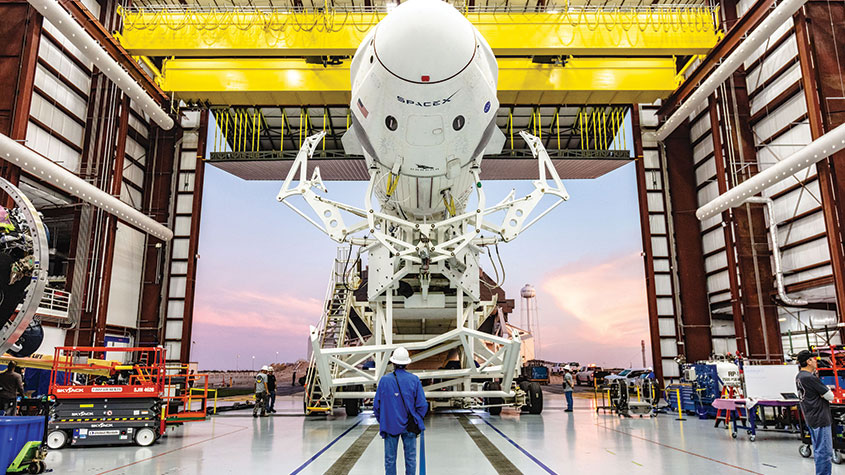 Invest in space: the final frontier for investors
Invest in space: the final frontier for investorsCover Story Matthew Partridge takes a look at how to invest in space, and explores the top stocks to buy to build exposure to this rapidly expanding sector.
-
 Invest in Brazil as the country gets set for growth
Invest in Brazil as the country gets set for growthCover Story It’s time to invest in Brazil as the economic powerhouse looks set to profit from the two key trends of the next 20 years: the global energy transition and population growth, says James McKeigue.
-
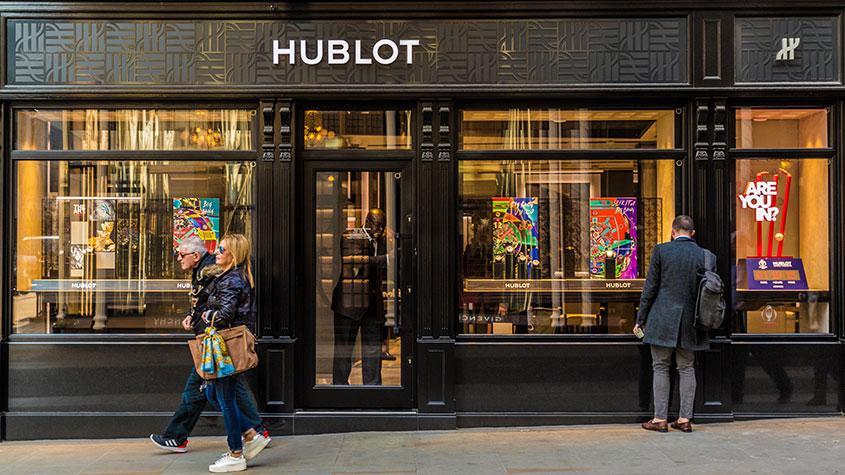 5 of the world’s best stocks
5 of the world’s best stocksCover Story Here are five of the world’s best stocks according to Rupert Hargreaves. He believes all of these businesses have unique advantages that will help them grow.
-
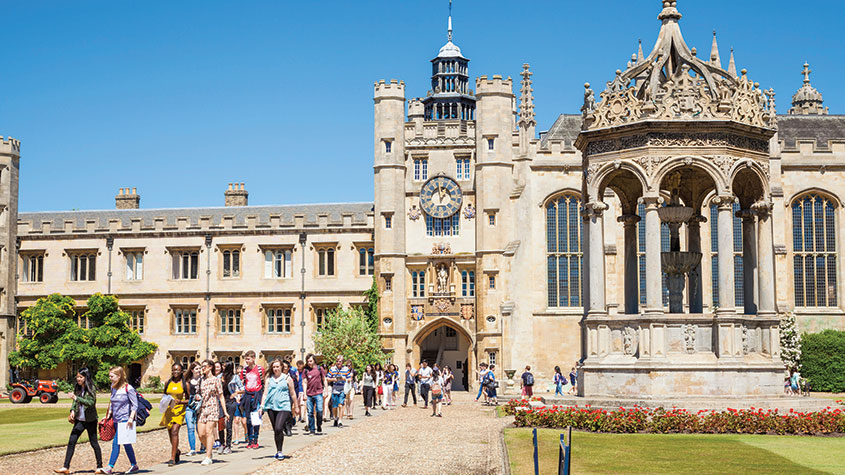 The best British tech stocks from a thriving sector
The best British tech stocks from a thriving sectorCover Story Move over, Silicon Valley. Over the past two decades the UK has become one of the main global hubs for tech start-ups. Matthew Partridge explains why, and highlights the most promising investments.
-
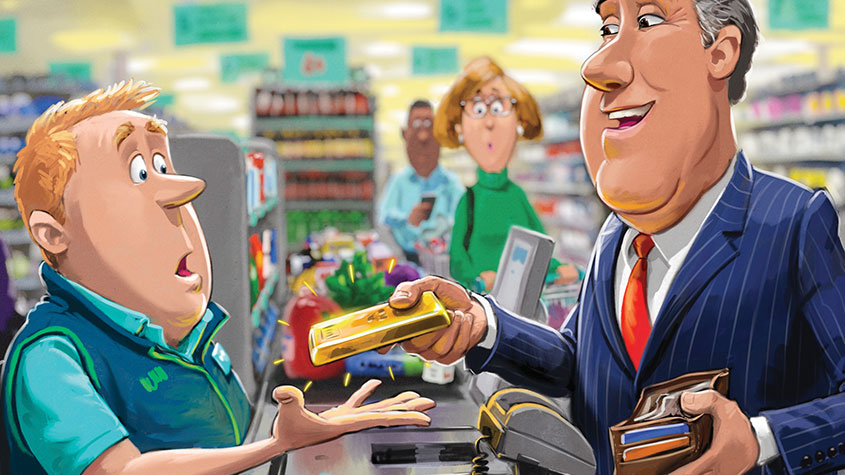 Could gold be the basis for a new global currency?
Could gold be the basis for a new global currency?Cover Story Gold has always been the most reliable form of money. Now collaboration between China and Russia could lead to a new gold-backed means of exchange – giving prices a big boost, says Dominic Frisby
-
 How to invest in videogames – a Great British success story
How to invest in videogames – a Great British success storyCover Story The pandemic gave the videogame sector a big boost, and that strong growth will endure. Bruce Packard provides an overview of the global outlook and assesses the four key UK-listed gaming firms.
-
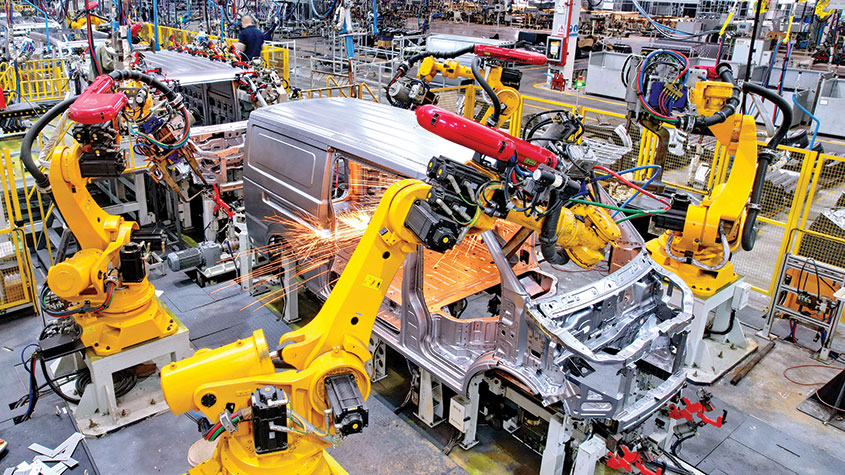 How to invest in smart factories as the “fourth industrial revolution” arrives
How to invest in smart factories as the “fourth industrial revolution” arrivesCover Story Exciting new technologies and trends are coming together to change the face of manufacturing. Matthew Partridge looks at the companies that will drive the fourth industrial revolution.
-
 Why now is a good time to buy diamond miners
Why now is a good time to buy diamond minersCover Story Demand for the gems is set to outstrip supply, making it a good time to buy miners, says David J. Stevenson.
